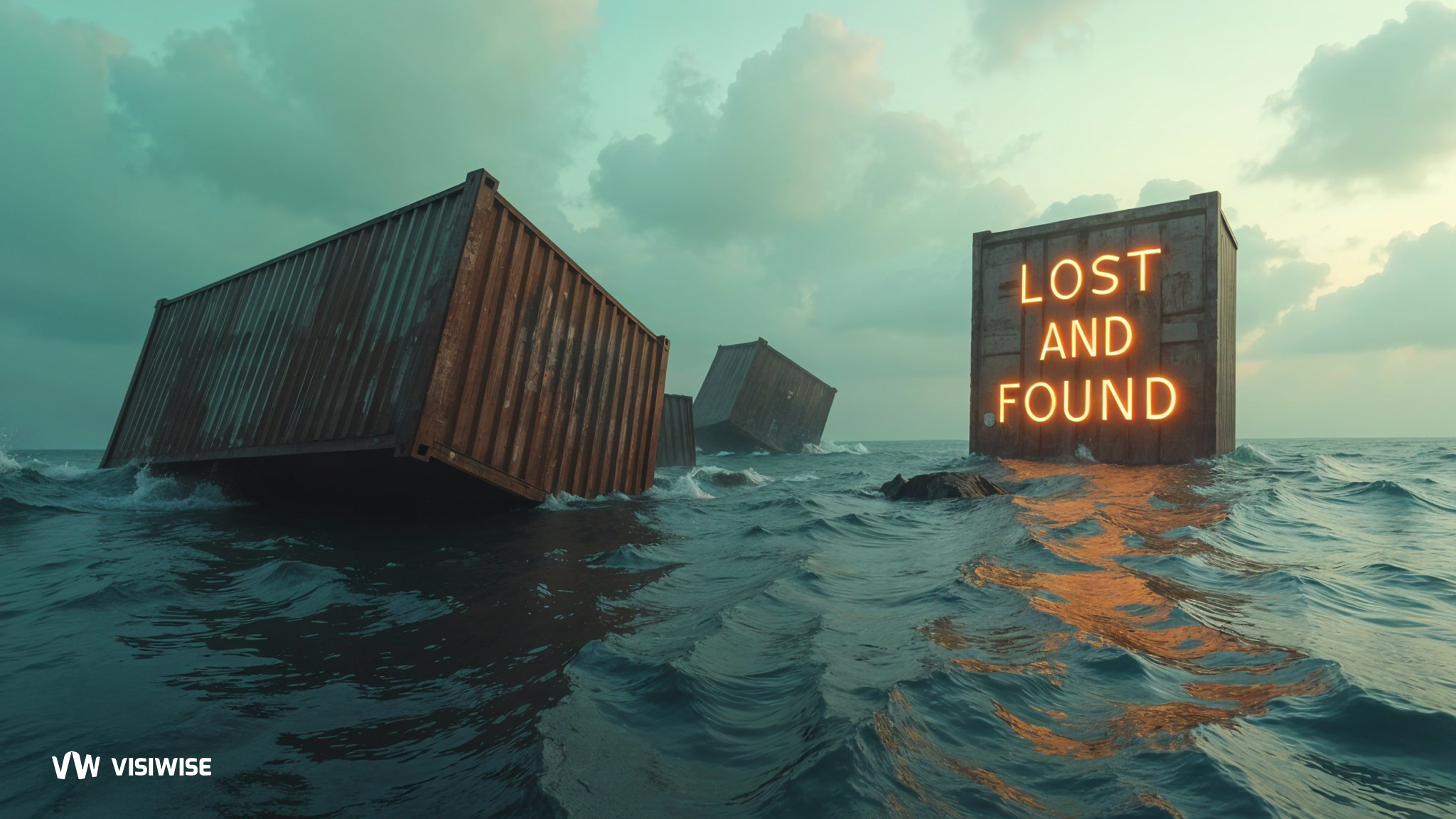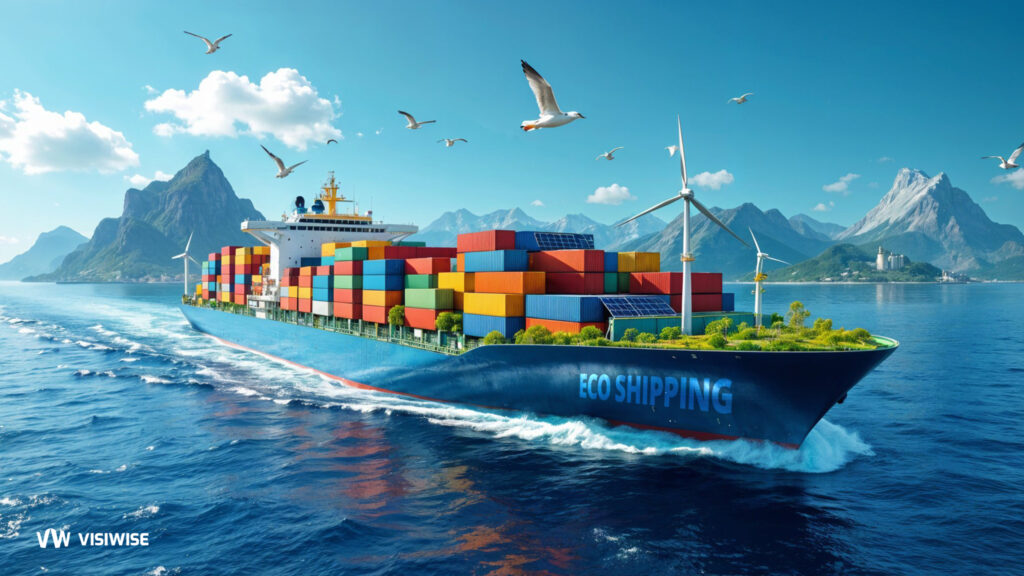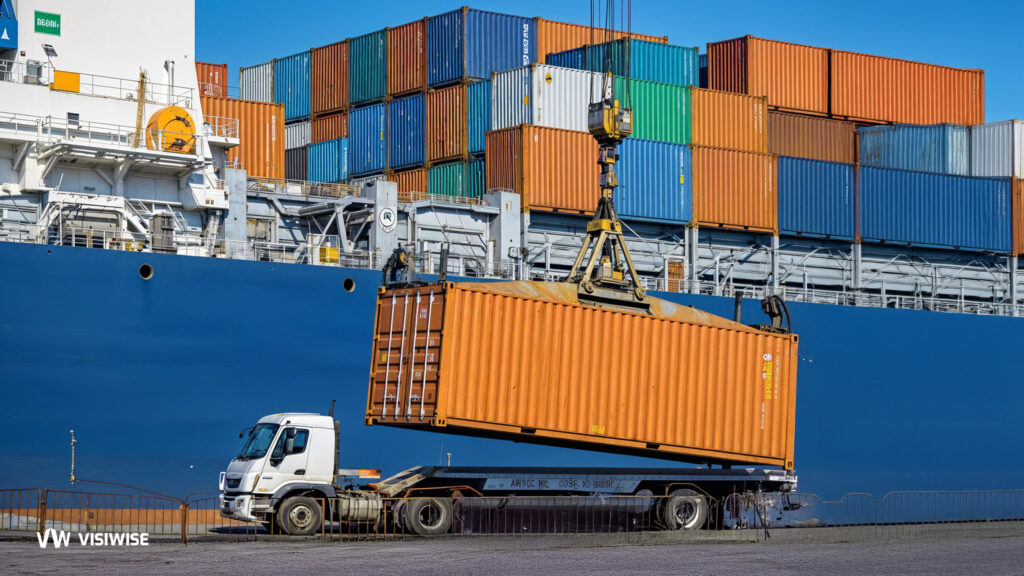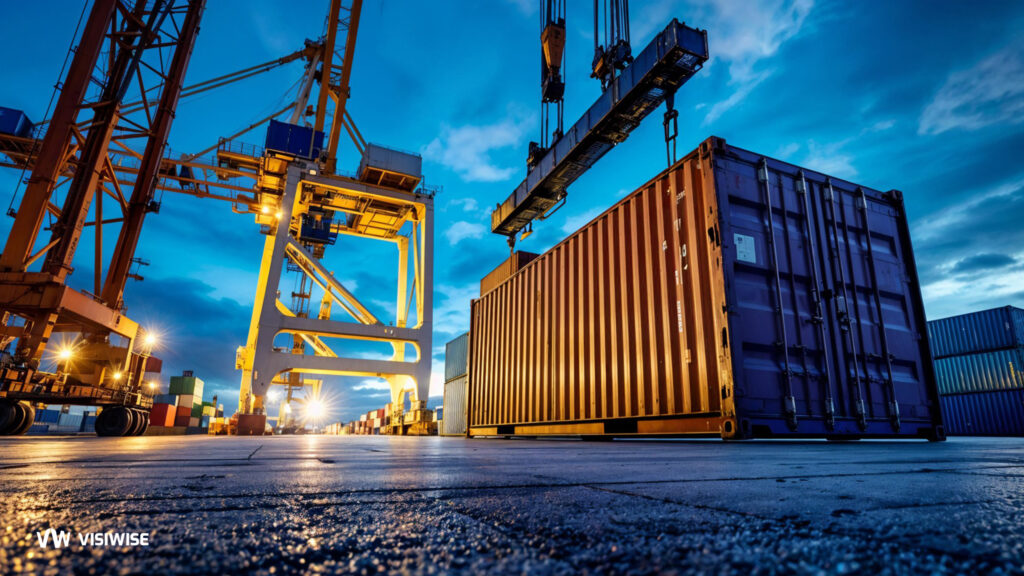That coffee maker in your kitchen? The jeans you’re wearing? There’s a good chance they spent weeks crossing an ocean inside a hulking metal container, one of millions making the same journey right now. Picture these giant steel containers—each as long as an eighteen-wheeler—piled high on cargo ships so enormous they swallow the skyline. Without them, our modern world would simply stop working.
But the sea doesn’t always play nice. Even with today’s technology, nature still calls the shots. A single rogue wave can wipe out dozens of containers in seconds. In 2021, the ONE Apus lost 1,816 containers in one storm—like someone flicked a giant’s finger across a toy ship. Other times, it’s human error: a loose latch, a miscalculated stack, or that one container everyone thought was secure until it wasn’t.
So, the question is how many containers are lost at sea? That’s what we are going to talk in this blog post.
Why Do Containers Get Lost?
The ocean claims containers in different ways—sometimes by the hundreds during violent storms, other times just one or two at a time. But the real story lies in how modern shipping itself has become part of the problem.
To understand why, consider the vessels themselves. The largest container ships now stretch over 1,300 feet—longer than the Empire State Building is tall. Their decks rise nearly 200 feet above the waterline, stacked with containers like a precarious Jenga tower.
"These aren’t just ships anymore; they’re floating industrial complexes," notes maritime researcher Jos Koning of MARIN. And with great size comes great risk—today’s mega-ships carry ten times more cargo than 1970s vessels, meaning every accident now has exponentially greater consequences.
The math is simple: bigger ships + bigger stacks = bigger spills when nature reminds us who’s really in charge.
Bigger Ships, Bigger Dangers: The Hidden Risks of Mega-Container Vessels
The ocean doesn’t care how advanced our technology gets—it will always remind us of its power. And with today’s colossal container ships, the stakes are higher than ever.
These floating behemoths are harder to steer, more likely to roll violently in storms, and more vulnerable to catastrophic chain reactions. A single damaged container can trigger a domino effect, sending entire stacks toppling into the sea.But the risks don’t stop there. Many accidents trace back to a quieter problem: paperwork.
- Mislabeled cargo
- Incorrect weights
- Improper stowage
Shipping companies are at the mercy of the information they’re given—they can’t physically check every one of the thousands of containers they carry. And the truth is alarming: A U.S. Coast Guard-affiliated study found that nearly 70% of containers labeled as “dangerous goods” failed safety inspections due to errors.
Yet as Ian Lennard of the National Cargo Bureau notes: “Despite all these problems, most of the time it arrives safely.”
That “most” is doing a lot of work—because when things go wrong, the consequences are massive.
How Many Containers Go Missing?
- 2023 – A record low of 221 containers were lost (out of 250 million shipped). About a third were recovered.
- 2022 – 661 containers disappeared, a big improvement from past years.
- 2013 (Worst Year) – Over 5,500 containers were lost, including disasters like the ONE Apus and Maersk Essen.
- Long-Term Average (2008-2022) – Roughly 1,566 containers lost yearly.
The Elusive Truth About Shipping Container Losses at Sea
We know containers frequently vanish into the ocean – at least 20,000 over the past 15 years by industry estimates – but the full picture remains frustratingly unclear. While dramatic accidents like the 2024 Baltimore bridge collision capture attention, the steady trickle of smaller losses often escapes documentation. The World Shipping Council, representing 90% of global container traffic, reports encouraging declines from their historical average of 1,480 annual losses to just 200 in 2023. Yet these official numbers tell only part of the story, excluding significant incidents like the Angel cargo ship that sank with 1,300 containers near Taiwan the same year. The reporting system’s voluntary nature and focus on major incidents means countless smaller losses – a container here, a few there during rough seas – likely go unrecorded. While the industry rightly celebrates safety improvements, the complete toll of containers lost to the ocean’s depths may forever remain partially submerged in uncertainty.
The Secret Afterlife of Lost Shipping Containers
When containers plunge into the ocean, their journey is just beginning. Marine biologist Andrew DeVogelaere, who has studied a single sunken container for 15 years in Monterey Bay, describes them as "time capsules of our consumer society – sitting on the seafloor for centuries." The impact is immediate and brutal: "They land like wrecking balls, crushing everything beneath them," he explains.
The 2020 ONE Apus disaster reveals what these metallic tombs contain. When the ship encountered violent swells, nearly 2,000 containers – packed with $100,000 worth of bicycle helmets, thousands of Crocs shoes, electronics, and more dangerous cargo like batteries, ethanol, and 54 containers of fireworks – disappeared into the Pacific. Some debris eventually washed ashore in Long Beach, Washington, offering ghostly glimpses of the vanished cargo.
These lost containers become:
- Instant artificial reefs (that smother natural habitats)
- Ticking time bombs (leaking hazardous materials for decades)
- Archaeological sites of modern consumerism (preserving our throwaway culture)
As DeVogelaere observes, each lost container creates a lasting footprint on the ocean floor – a hidden consequence of global trade that will outlive us all.
Ocean Graveyards: How Lost Shipping Containers Haunt Our Seas
The tragic journey of lost containers doesn’t end when they sink. Researchers have traced their debris across thousands of miles—from Washington’s shores to the remote Midway Atoll, a critical sanctuary for millions of seabirds near Hawaii. These floating remnants of disaster criss-cross oceans, poisoning ecosystems far from their origin.
Few places understand this devastation better than Sri Lanka. Three years after the X-Press Pearl caught fire and sank offshore, the scars remain. The burning ship dumped 1,400 containers into the sea, unleashing a toxic cocktail:
- Billions of plastic pellets (nurdles) that still wash ashore today
- Thousands of tons of nitric acid, lead, and methanol
- Sodium hydroxide, a corrosive chemical that ravages marine life
Hemantha Withanage, who witnessed the aftermath, recalls beaches reeking of burnt chemicals. Volunteers collected thousands of dead fish, their gills clogged with plastic, along with 400 sea turtles, 40 dolphins, and six whales—many suffocated by ingested debris. “It was like a war zone,” he said.
These lost containers don’t just vanish—they linger, leach, and kill, turning vibrant coastlines into industrial graveyards. And with every disaster, the ocean’s burden grows heavier.
Plastic Tide: The Enduring Scars of a Shipping Disaster
The cleanup effort looked like something from a sci-fi nightmare – crews in head-to-toe hazmat suits combing through the surf with hand sieves, desperately trying to collect billions of tiny plastic pellets littering Sri Lanka’s beaches. But this was no dystopian fiction – it was the grim reality after the X-Press Pearl disaster.
The human cost has been staggering:
- Fishing communities lost livelihoods for three long months when waters were closed
- 12,000 families who depend on the sea have received just a fraction of the $72 million they’re owed
- Even today, summer winds still push waves of plastic pellets onto once-pristine shores
Hemantha Withanage of Sri Lanka’s Centre for Environmental Justice watches helplessly as each tide brings fresh reminders of the disaster. "The pellets keep coming back," he says, "like ghosts from a ship that won’t stay buried."
The heartbreaking truth? Some environmental wounds never fully heal. While the world moves on, Sri Lanka’s beaches remain caught in an endless cycle of contamination – a permanent monument to the hidden costs of global shipping.
The Invisible Spills: Why Many Lost Containers Go Uncounted
The ocean’s dirty secret? Shipping companies lose far more containers than official reports suggest. Maritime intelligence firm Lloyd’s List reveals widespread underreporting, with insurers holding the most accurate data – but no laws force them to share it publicly.
While the World Shipping Council researches safer stacking and navigation methods, the system remains full of holes:
- No mandatory global reporting until 2026 (with UN treaty changes)
- No penalties for non-compliance
- Financial incentives to downplay losses
As one industry insider admits: "If nobody sees it sink, did it really happen?" Until stronger accountability measures emerge, the sea will keep swallowing containers – and the truth – without a trace.
Key Issues:
- Insurance companies know more than they disclose
- New UN rules lack enforcement teeth
- The “out of sight, out of mind” mentality persists
The Cost to Global Trade
- Billions in Lost Goods – From sneakers to medical supplies, vanished cargo hits businesses hard.
- Skyrocketing Insurance – More claims mean higher costs for shipping companies.
- Supply Chain Chaos – Delays ripple across ports, factories, and store shelves.
How the Shipping Industry Is Fighting Back
- Tighter Safety Rules – Better lashing standards, weight checks, and stowage plans.
- Smart Tech – Sensors and AI help predict dangerous conditions.
- Stronger Ships – New designs reduce rolling and improve container stability.
The Bottom Line
We’ll never know how many containers really vanish into the ocean because, frankly, no one’s forced to keep full count. Right now, it’s like a game of "trust us"—shipping companies report what they want, insurers know more than they share, and the ocean pays the price. New UN rules coming in 2026 sound good on paper, but with no real penalties, they’re just polite suggestions. Until we treat lost containers like the ecological disasters they are—with strict tracking, transparency, and consequences—the sea will keep swallowing our cargo, our pollution, and the truth.



